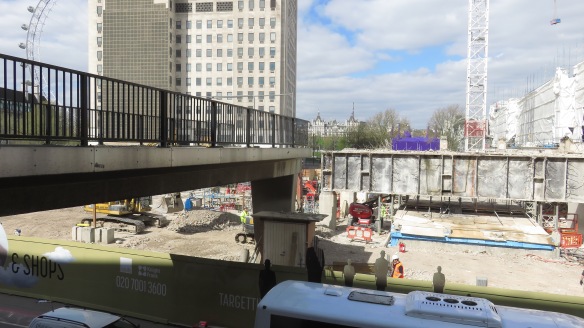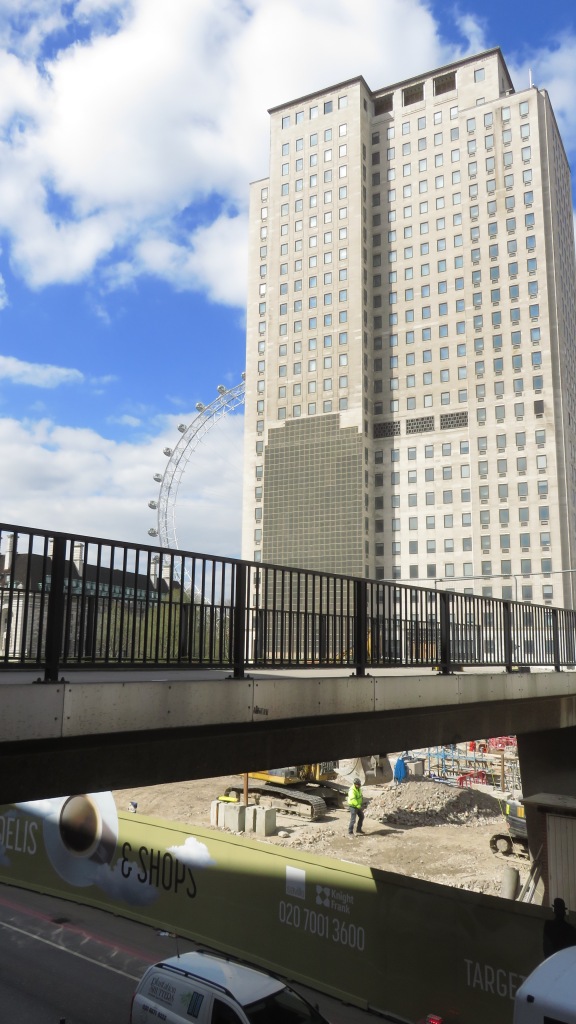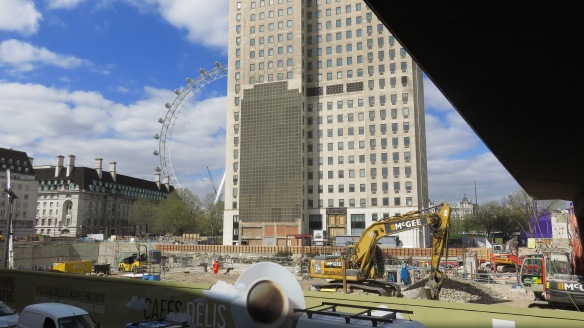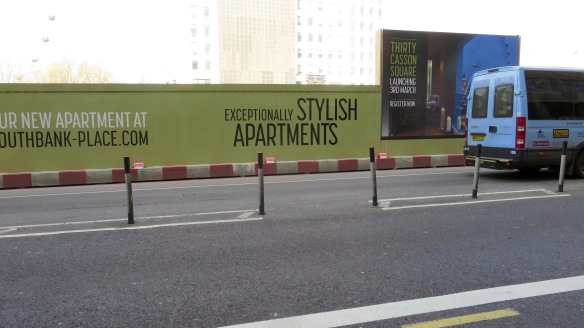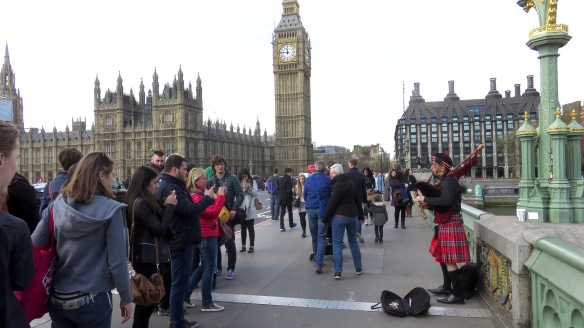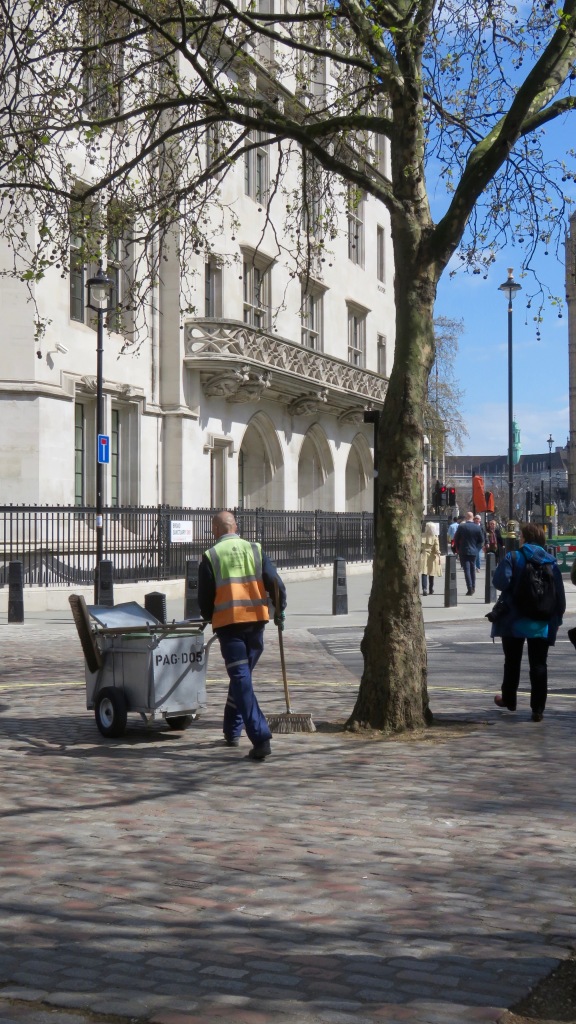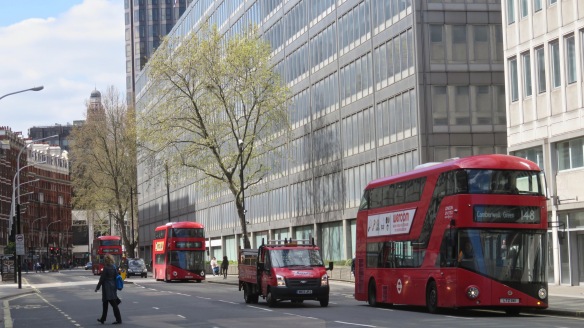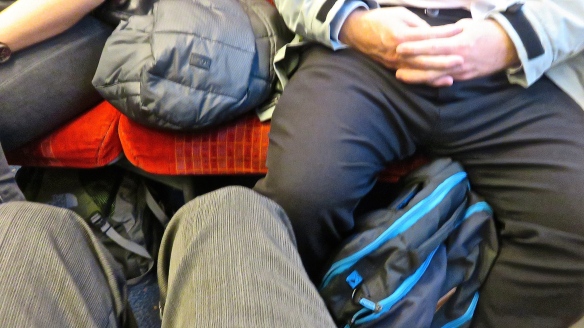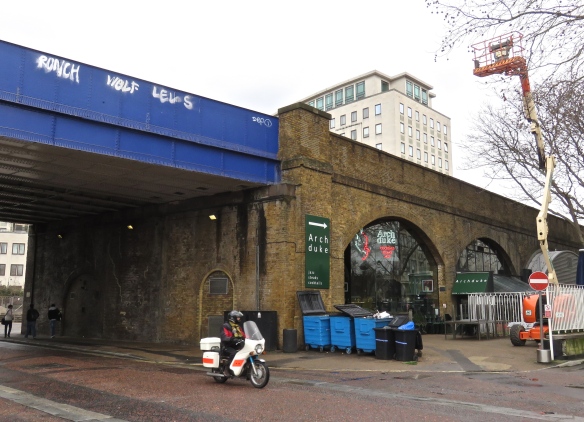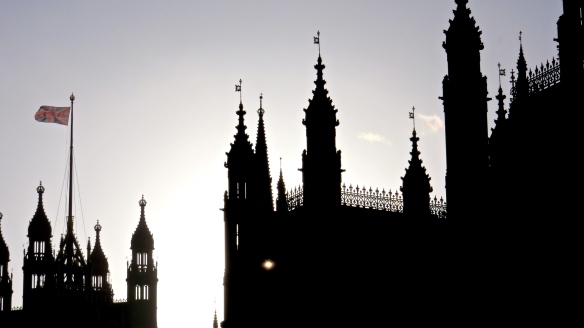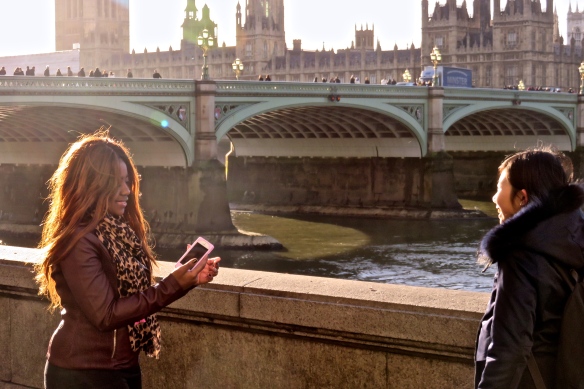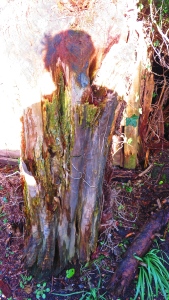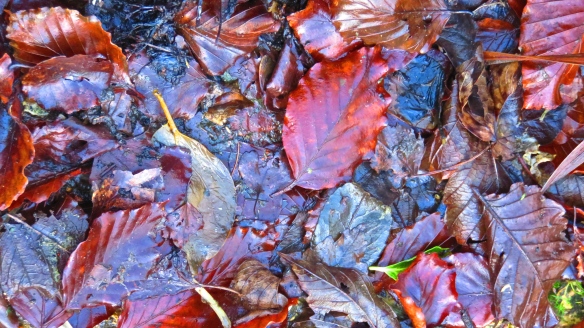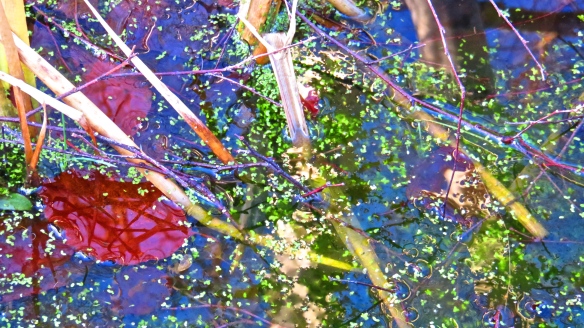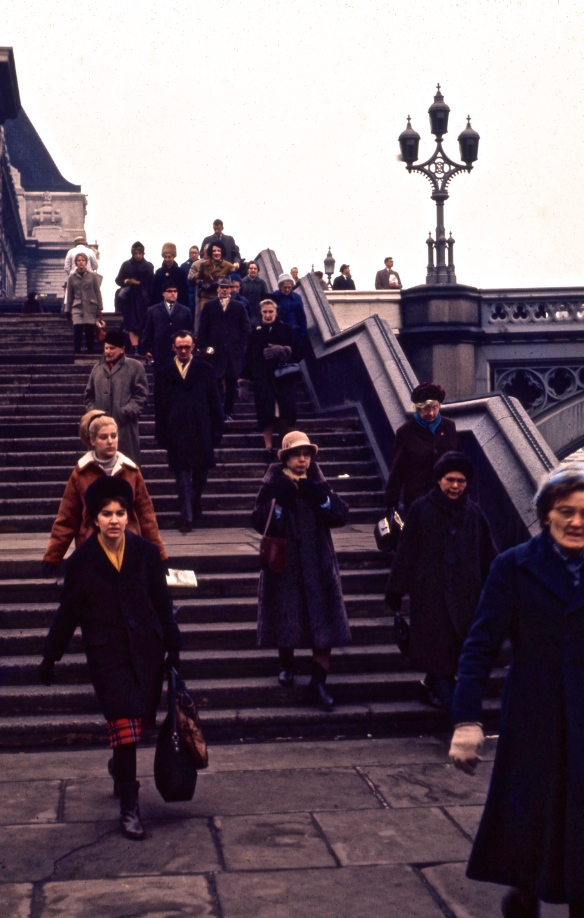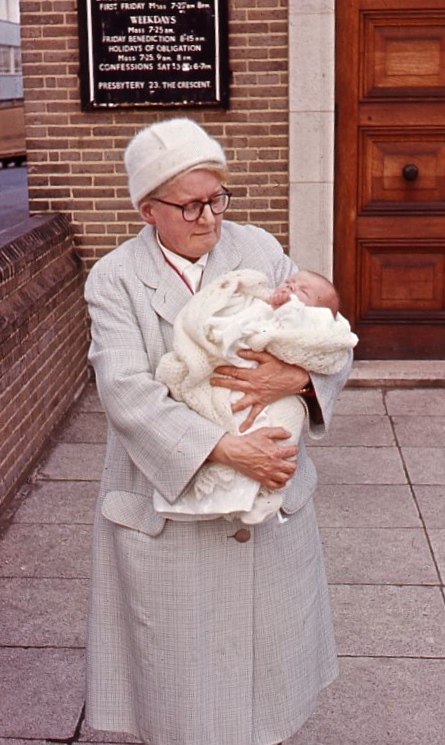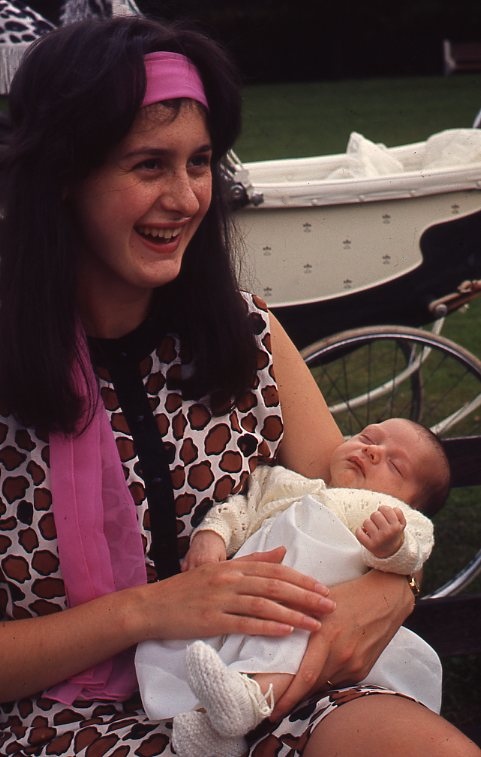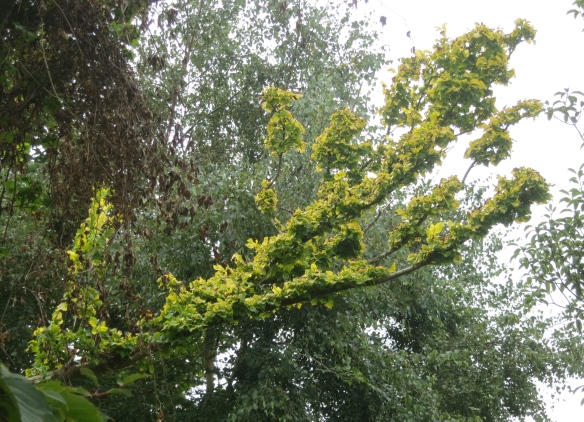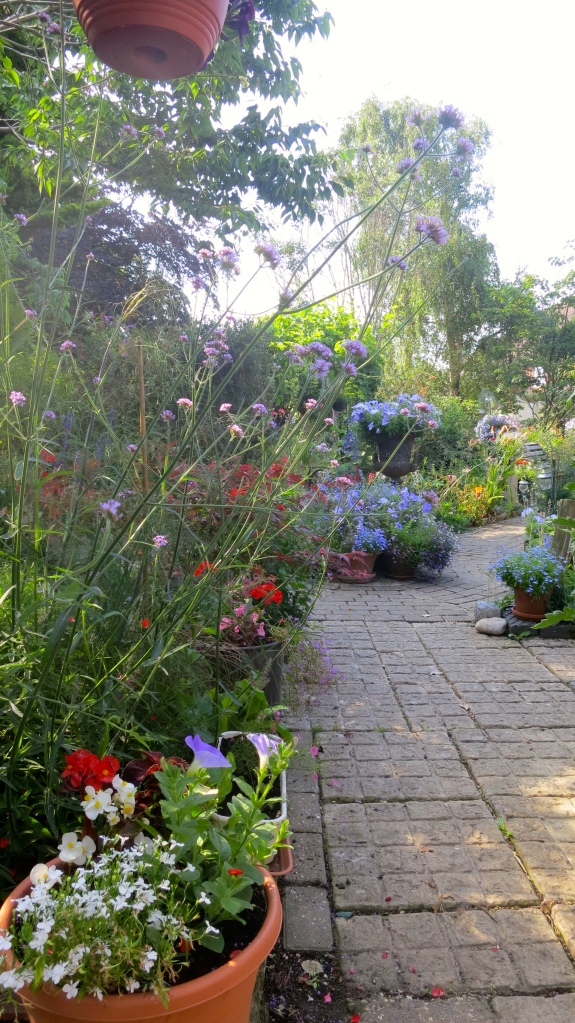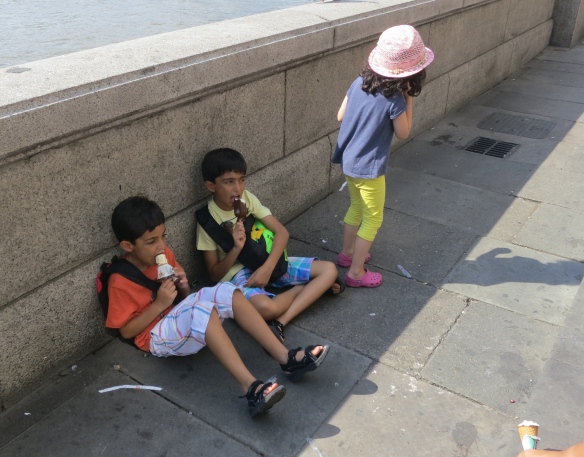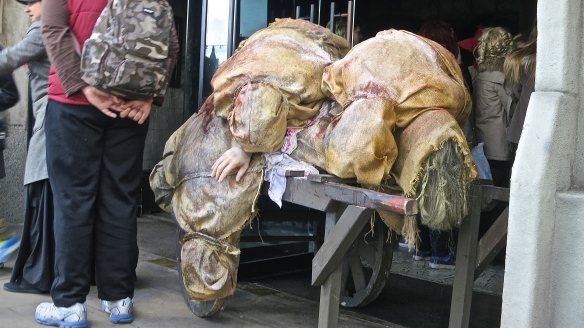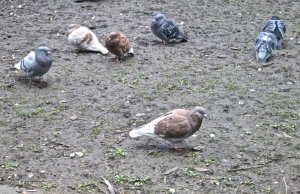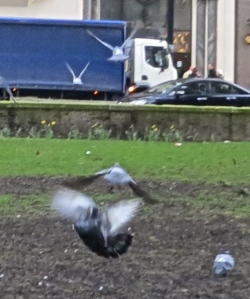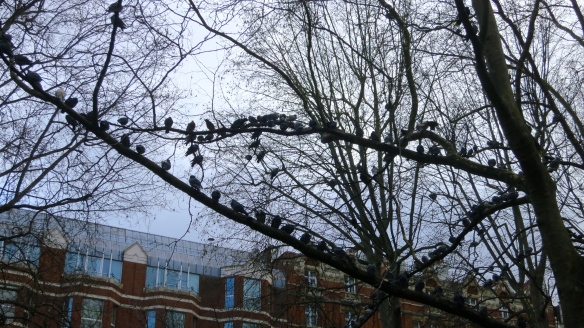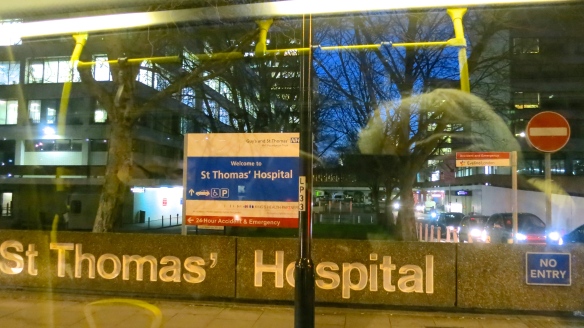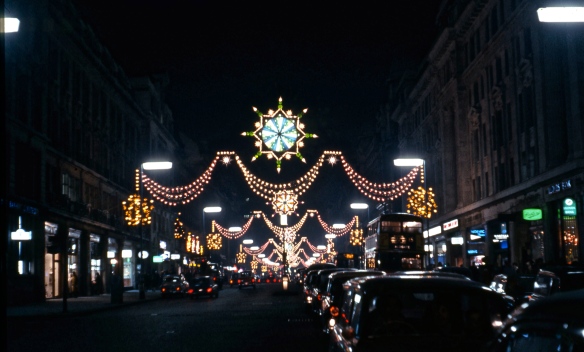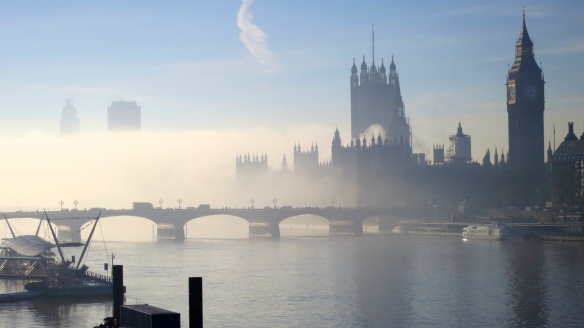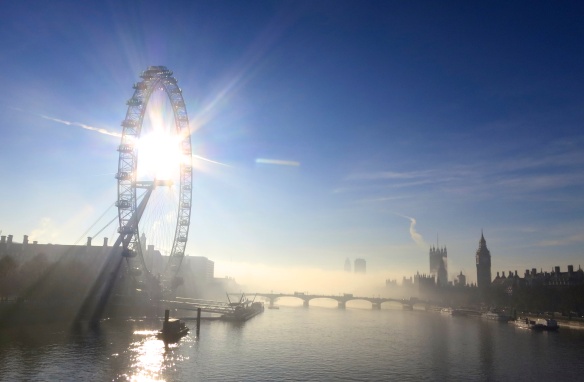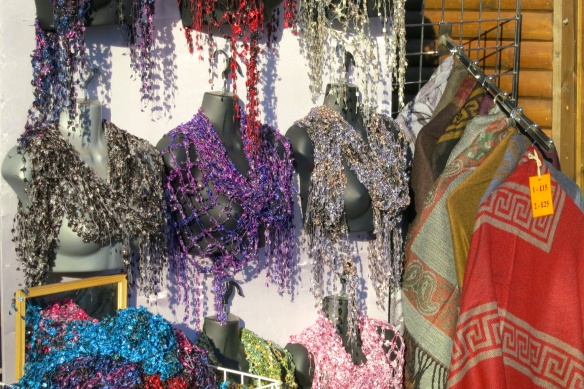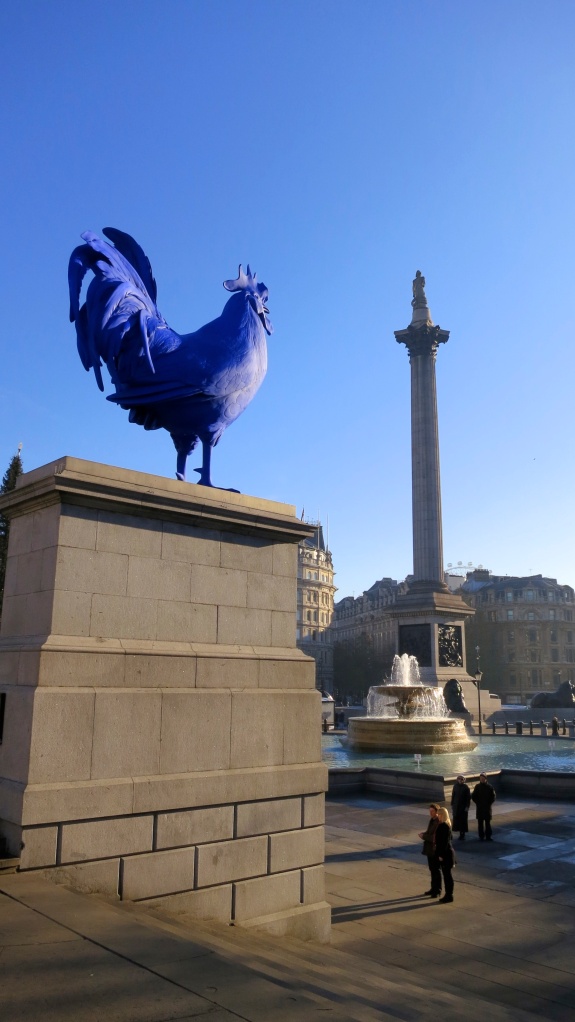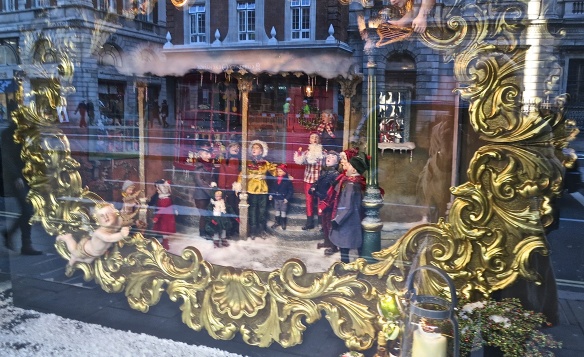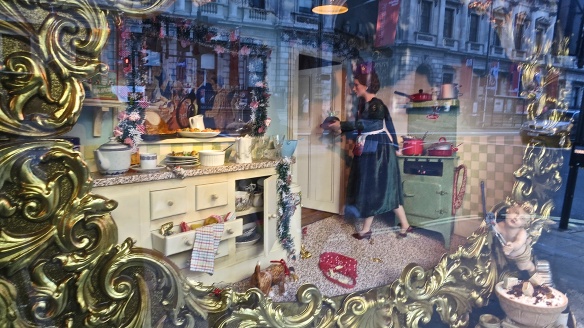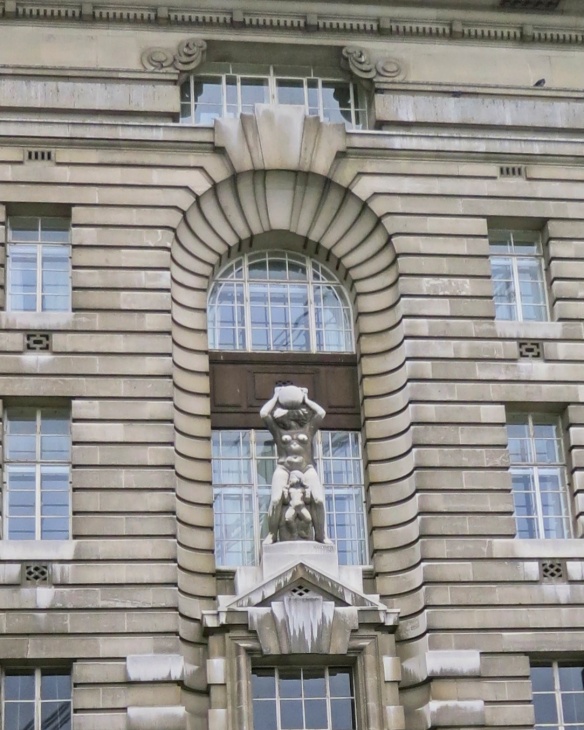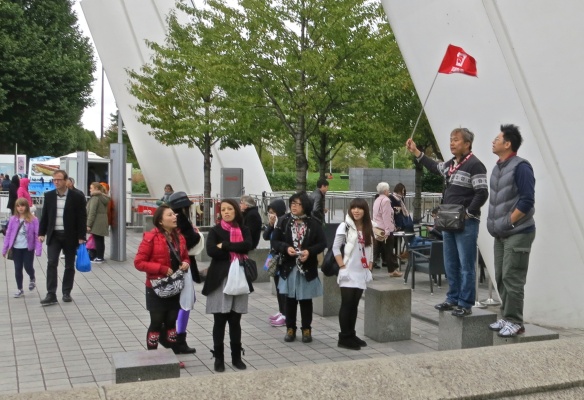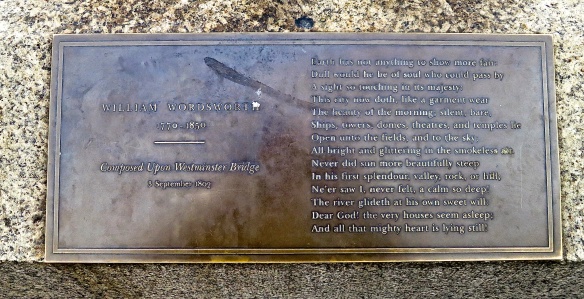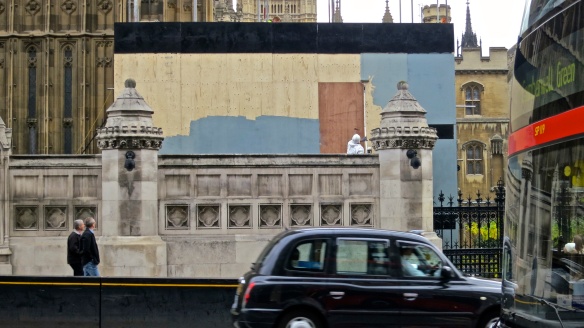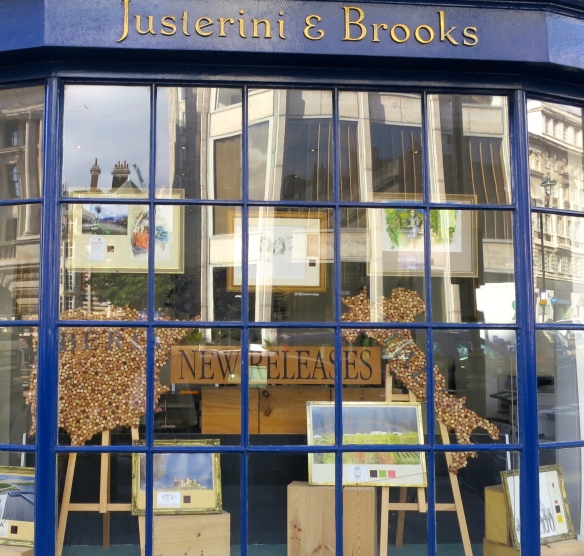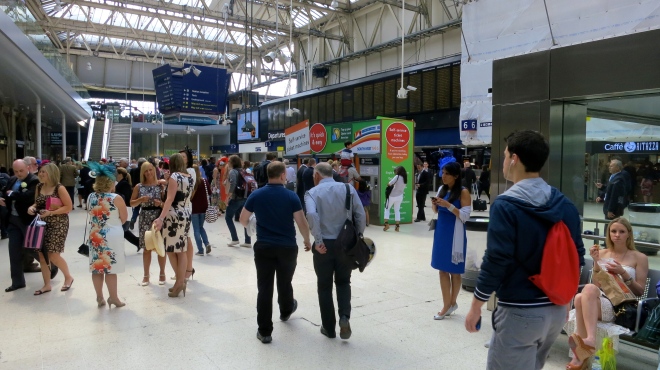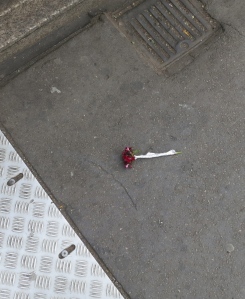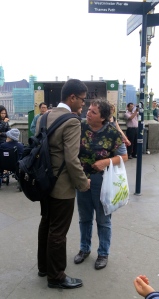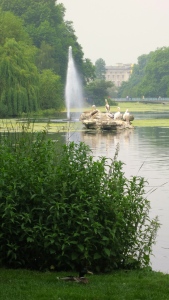CLICK ON ANY IMAGE IN A GROUP TO ACCESS ENLARGED GALLERIES

Given his abiding interest in Paddle Steamers, it was only to be expected that my friend Norman should celebrate his 70th birthday,
by hiring the Viscount to give all his friends a boat trip to remember. In the second of these images, Norman greets the guests as they embark. Today I scanned this batch of colour negatives from 6th April 2002.
We were offered a waterborne view of The Houses of Parliament and Big Ben. The last of these images contains the queue of people walking along Westminster Bridge to visit the coffin of Queen Elizabeth, The Queen Mother, whose body was lying in state. Here is what Wikipedia has to say about
‘Elizabeth Angela Marguerite Bowes-Lyon (4 August 1900 – 30 March 2002) was the wife of King George VI and the mother of Queen Elizabeth II and Princess Margaret, Countess of Snowdon. She was Queen of the United Kingdom and the Dominions from her husband’s accession in 1936 until his death in 1952, after which she was known as Queen Elizabeth The Queen Mother,[2] to avoid confusion with her daughter. She was the last Empress of India.
Born into a family of British nobility, she came to prominence in 1923 when she married the Duke of York, the second son of King George V and Queen Mary. The couple and their daughters embodied traditional ideas of family and public service.[3] She undertook a variety of public engagements and became known for her consistently cheerful countenance.[4]
In 1936, her husband unexpectedly became king when his brother, Edward VIII, abdicated in order to marry the American divorcée Wallis Simpson. Elizabeth then became queen. She accompanied her husband on diplomatic tours to France and North America before the start of the Second World War. During the war, her seemingly indomitable spirit provided moral support to the British public. In recognition of her role as an asset to British interests, Adolf Hitler described her as “the most dangerous woman in Europe”.[5] After the war, her husband’s health deteriorated and she was widowed at the age of 51. Her elder daughter, aged 25, became the new queen.
From the death of Queen Mary in 1953 Elizabeth was viewed as the matriarch of the British royal family. In her later years, she was a consistently popular member of the family, even when other members were suffering from low levels of public approval.[6] She continued an active public life until just a few months before her death at the age of 101, seven weeks after the death of her younger daughter, Princess Margaret.’
As we steamed under that bridge guests were already happily mingling.
St Paul’s Cathedral stood proud along the embankment. It was in this place of worship that Norman had been ordained some years before.
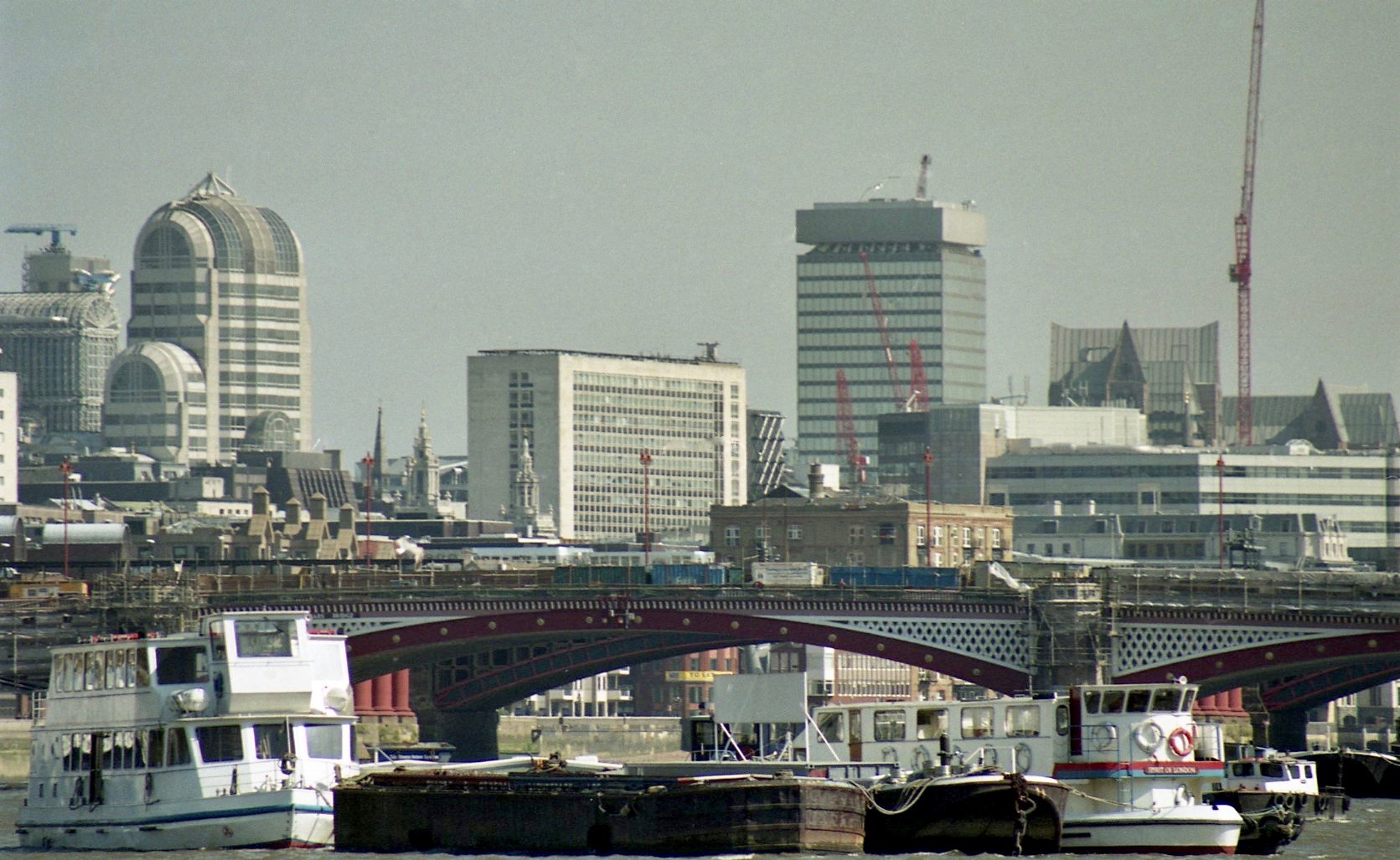
Soon we arrived at Blackfriar’s Railway Bridge,
beyond which we reached the recently reopened Millennium Bridge, known by Londoners as the Wobbly Bridge, and beyond this Southwark Bridge.
This extract from Wikepedia’s entry on the Millennium Bridge explains how it acquired its epithet:
‘The Millennium Bridge, officially known as the London Millennium Footbridge, is a steel suspension bridge for pedestrians crossing the River Thames in London, linking Bankside with the City of London. It is located between Southwark Bridge and Blackfriars Railway Bridge. It is owned and maintained by Bridge House Estates, a charitable trust overseen by the City of London Corporation. Construction began in 1998, and it initially opened in June 2000.
Londoners nicknamed the bridge the “Wobbly Bridge” after pedestrians felt unexpected swaying motion. The bridge was closed later on opening day, and after two days of limited access, it was closed for almost two years while modifications were made to eliminate the motion. It reopened in 2002.’
Beyond Southwark Bridge lies the famous Tower Bridge, near which is moored H.M.S. Belfast.
Wikipedia tells us this about the museum ship:
‘HMS Belfast is a Town-class light cruiser that was built for the Royal Navy, currently permanently moored as a museum ship on the River Thames in London, England, operated by the Imperial War Museum.
Construction of Belfast, the first ship in the Royal Navy to be named after the capital city of Northern Ireland and one of ten Town-class cruisers, began in December 1936. She was launched on St Patrick’s Day 1938. Commissioned in early August 1939 shortly before the outbreak of the Second World War, Belfast was initially part of the British naval blockade against Germany. In November 1939, Belfast struck a German mine and spent more than two years undergoing extensive repairs. Belfast returned to action in November 1942 with improved firepower, radar equipment, and armour. Belfast saw action escorting Arctic convoys to the Soviet Union during 1943 and in December 1943 played an important role in the Battle of North Cape, assisting in the destruction of the German warship Scharnhorst. In June 1944, Belfast took part in Operation Overlord supporting the Normandy landings. In June 1945, Belfast was redeployed to the Far East to join the British Pacific Fleet, arriving shortly before the end of the Second World War. Belfast saw further combat action in 1950–52 during the Korean War and underwent an extensive modernisation between 1956 and 1959. A number of further overseas commissions followed before Belfast entered reserve in 1963.
In 1967, efforts were initiated to avert Belfast‘s expected scrapping and to preserve her as a museum ship. A joint committee of the Imperial War Museum, the National Maritime Museum, and the Ministry of Defence were established and then reported in June 1968 that preservation was practical. In 1971, the government decided against preservation, prompting the formation of the private HMS Belfast Trust to campaign for her preservation. The efforts of the Trust were successful, and the government transferred the ship to the Trust in July 1971. Brought to London, she was moored on the River Thames near Tower Bridge in the Pool of London. Opened to the public in October 1971, Belfast became a branch of the Imperial War Museum in 1978. A popular tourist attraction, Belfast receives over a quarter of a million visitors per year.[8] As a branch of a national museum and part of the National Historic Fleet, Belfast is supported by the Department for Culture, Media and Sport, admissions income, and the museum’s commercial activities. The ship was closed to visitors following an accident in November 2011 and re-opened on 18 May 2012.’
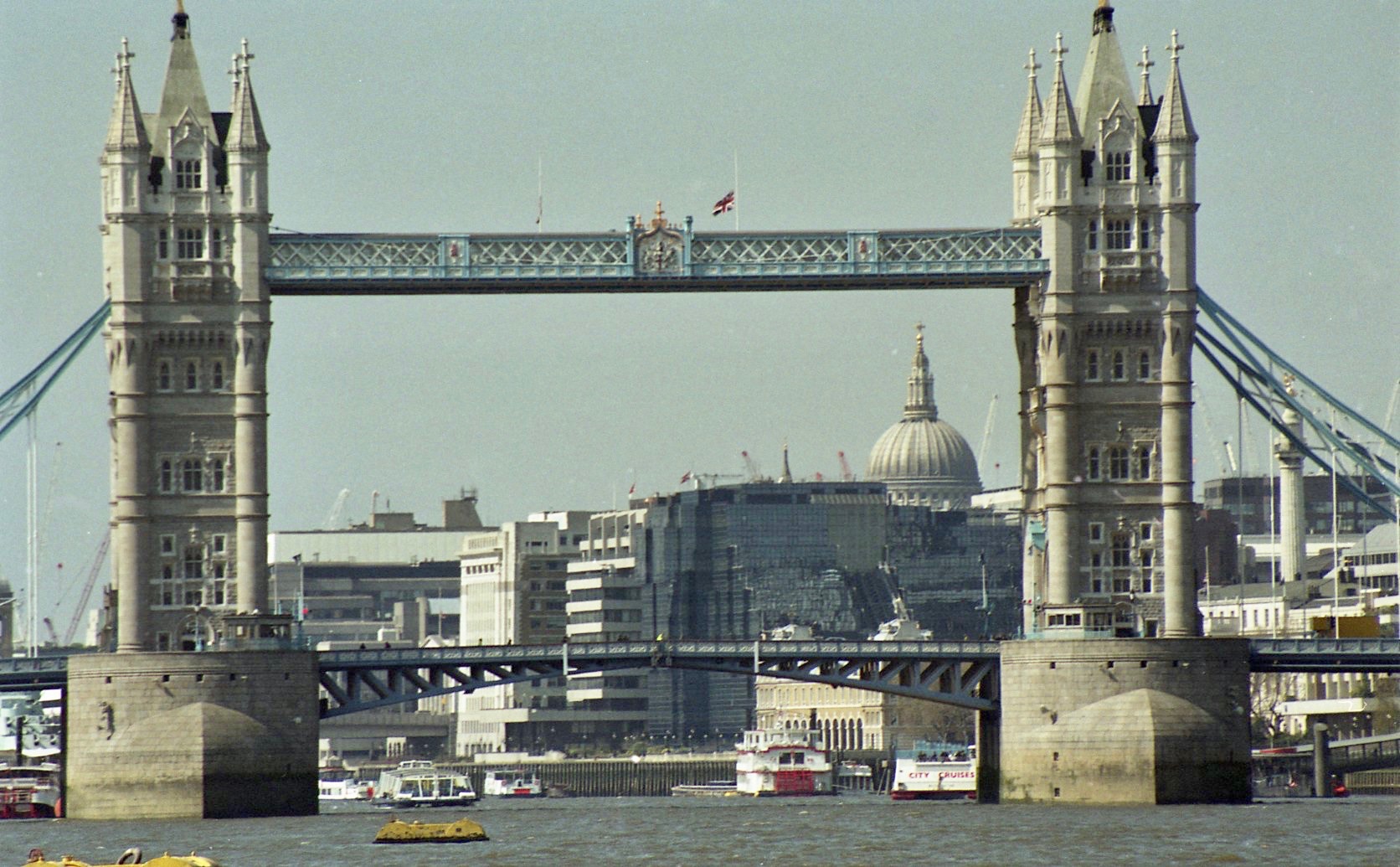
Beyond Tower Bridge, St Paul’s still dominates the horizon.
Soon we passed another paddle steamer, the Dixie Queen, a luxury party boat; and the Tower of London.
I would have been very remiss had I not photographed Oliver’s Wharf and made a print for my grandson Oliver. The Victorian Web has this to say about this building on Wapping High Street:
‘Oliver’s Wharf. F. & H. Francis. 1869-70. Wapping, London E1. Built for George Oliver “in the Tudor gothic style, this wharf handled general cargo but had special facilities for tea” (Craig et al. 45). Bought for redevelopment in 1972, it was the first warehouse in Wapping, and one of the first of all the old warehouses, to be converted into housing, yielding twenty-three very expensive luxury flats. It has been described as “the most architecturally sophisticated warehouse” in its street (Williamson et al. 228).
I made many images of this event, and will continue the story in due course.
This evening we dined on Mr Pink’s fish and chips with pickled onions and gherkins.

